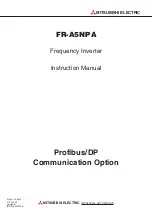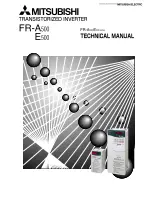
NORDAC SK 5xxE Manual
Safety information
BU 0500 GB
3
NORDAC SK 5xxE Frequency Inverter
Safety and operating instructions for drive power converters
(as per: Low voltage guideline 73/23/EEC )
1. General
During operation, drive power converters may have, depending
on their protection class, live, bare, moving or rotating parts or hot
surfaces.
Unauthorised removal of covers, improper use, incorrect
installation or operation leads to the risk of serious personal injury
or material damage.
Further information can be found in this documentation.
All transportation, installation and initialisation and maintenance
work must be carried out by qualified personnel (compliant with
IEC 364, CENELEC HD 384, DIN VDE 0100, IEC 664 or DIN
VDE 0110, and national accident prevention regulations).
For the purposes of these basic safety instructions, qualified
personnel are persons who are familiar with the erection,
installation, commissioning and operation of this product and who
have the relevant qualifications for their work.
2. Proper use
Drive power converters are components intended for installation
in electrical systems or machines.
When being installed in machines, the drive power converter
cannot be commissioned (i.e. implementation of the proper use)
until it has been ensured that the machine meets the provisions of
the EC directive 89/392/EEC (machine directive); EN 60204 must
also be complied with.
Commissioning (i.e. implementation of the proper use) is only
permitted when the EMC directive (89/336/EEC) is complied with.
The drive power converters meet the requirements of the low
voltage directive 73/23/EEC. The harmonised standards in prEN
50178/DIN VDE 0160, together with EN 60439-1/VDE 0660 Part
500 and EN 60146/VDE 0558 were applied for the drive power
converter.
Technical data and information for connection conditions can be
found on the rating plate and in the documentation, and must be
complied with.
3. Transport, storage
Information regarding transport, storage and correct handling
must be complied with.
4. Installation
The installation and cooling of the equipment must be
implemented as per the regulations in the corresponding
documentation.
The drive power converter must be protected against
impermissible loads. In particular, no components must be bent
and/or the insulation distances changed during transport and
handling. Touching of electronic components and contacts must
be avoided.
Drive power converters have electrostatically sensitive
components that can be easily damaged by incorrect handling.
Electrical components must not be mechanically damaged or
destroyed (this may cause a health hazard!).
5. Electrical connection
When working on drive power inverters which are connected to
high voltages, the applicable national accident prevention
regulations must be complied with (e.g. VBG 4).
The electrical installation must be implemented as per the
applicable regulations (e.g. cable cross-section, fuses, earth lead
connections). Further information is contained in the
documentation.
Information about EMC-compliant installation – such as shielding,
earthing, location of filters and installation of cables – can be
found in the drive power converter documentation. These
instructions must also always be observed for drive inverters with
CE approval. Compliance with the limit values specified in the
EMC regulations is the responsibility of the manufacturer of the
system or machine.
6. Operation
Systems where drive power converters are installed must be
equipped, where necessary, with additional monitoring and
protective equipment as per the applicable safety requirements,
e.g. legislation concerning technical equipment, accident
prevention regulations, etc. Modifications to the drive power
converter using the operating software are permitted.
After the drive power converter is disconnected from the power
supply, live equipment components and power connections
should not be touched immediately because of possibly charged
capacitors. Comply with the applicable information signs located
on the drive power converter.
All covers must be kept closed during operation.
7. Maintenance and repairs
The manufacturer documentation must be complied with.
These safety instructions must be kept in a safe place!




































